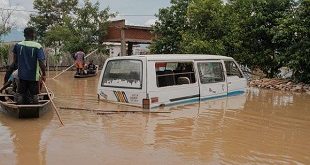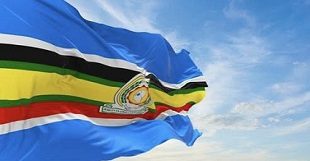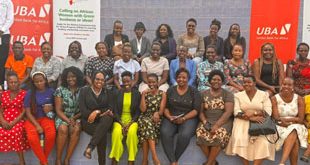
Imvepi settlement on the Uganda-South Sudanese border puts UNHCR to the test
Kampala, Uganda | RONALD MUSOKE | In the mid-morning of July 30, Col. Lam Paul Gabriel, the deputy Spokesperson of the SPLA-IO, one of the rebel movements wedging war against Salva Kiir’s government in South Sudan, sat under the shade of a big tree watching as dozens of his countrymen and women crossed one by one, and trudged into Uganda, mainly on foot. A few pushed bicycles up the hill carrying mattresses, cooking pots, jerrycans, chickens, and goats. The women and young girls followed with babies strapped on their backs.
Usually, they would have crossed at Oraba border post, which is the official crossing into Uganda. But Kiir’s government closed it when fighting intensified recently. Now the fleeing people were left with no alternative but to navigate mosquito infested jungles and crocodile infested rivers like Kaya before entering Uganda.
“I feel very angry and annoyed to see so many people cross the bridge into Uganda,” Col. Lam told journalists at the Kijaria informal entry border post, a few metres away from the narrow wooden footbridge on River Kaya.
“It makes us determined to remove this president who does not care about the suffering of his people. I didn’t feel happy seeing all these people cross into Uganda.”
The fleeing crowds normally head to refugee settlements like Imvepi in Arua or Palorinya in Moyo.
One of them Sande John, 39, a businessman from Dari in Mundari, western Equatoria entered through a border post called `Busia’ and ended up at Kuluba reception centre—a clearing of about five acres fitted with gigantic UNHCR-emblazoned tarpaulin tents in Koboko District.
After formalising his status as a refugee, the dark-skinned giant of a man with bright eyes was waiting for the bus to take him to the refugee settlement when we spoke.
Sande said he was relieved to be safe and secure but he was angry at what he had gone through after Machar’s rebels recently stormed his village asking for food and the local chief approached him and other businessmen in the area to find food for them.
However as the rebels began preparing their meal, information leaked to the government troops who quickly attacked. Many soldiers were killed in the ensuing fight and in retaliation they attacked Sande’s village killing everyone they could see.
Sande, his four month pregnant wife, and three children fled southwards—to Uganda. But he left his family behind and proceeded to Uganda on foot and hired motorcycle taxis. He said he had a business he had managed for over 17 years.
Waiting with Sande was Jeina Kiko, a 55- year old woman carrying her grandson, Muto. They arrived in Uganda on July 30 with her daughter and the grandson from Mitika near Yei.
“Life had become hard,” she says.
She says when her husband died three years ago from natural causes, she ended up living with her daughter and son-in-law in Mitika until recently when her daughter’s husband— the sole bread winner for the family— was killed by the government forces. They fled to Uganda for survival, walking first for three weeks into the jungles of the Democratic Republic of Congo.
The UNHCR officials say almost all refugees crossing into Uganda describe horrors of fighting, ethnically motivated attacks, and compulsory recruitment of young people into armed groups.
In the queue for the bus, one boy stood out because of the bouquet of plastic rose flowers he was holding. Bilongo appeared to be 10 years old and had just arrived with his uncle, James Malish, 21. Bilongo says his father was killed in the fighting. What about the flowers, I ask him? But it is his uncle who answers.
“I bought these flowers in Yei because I love them,” says the lanky youth with a gap in his grinning teeth, “I wanted these flowers to be a part of my new life in Uganda.”
Up to 3666 South Sudanese refugees arrived in Uganda in a space of seven days starting July 26. According to UNHCR, that was 476 refugees less than the number of refugees who arrived the week earlier. The seasonal rains flooding the rivers were hampering movement.
Still, the main camp at Imvepi filled over the period. It reached its carrying capacity on July 31 – just five months after re-opening on Feb.19. Humanitarian agencies had hoped the area—an expanse of green virgin land measuring about 57 sq km would take years to hold 140,000 refugees but at the end of July, the settlement’s refugee population hit the 135,000 mark.
With some studies showing that refugees can take an average of 12 years before going back home, Dennis Ocitti Omwoya, the UNHCR assistant field officer told The Independent that the UNHCR had decided to maintain a buffer of 5,000 to cater for new births in the coming years.
As Imvepi closed its red gate to new arrivals, new asylum seekers had to go to a new site; Rhino Camp Extension opened in early August at Omugo in Arua District. It is an extension to Rhino camp settlement which already hosts 86,000 people.
By early August, South Sudanese refugees in Uganda stood at 995,487 but UNHCR was certain they could hit one million any time soon.
That will make Uganda become Africa’s number one refugee hosting country and fifth overall in the world. Uganda already has 1,309,698 refugees, from many countries, which is the highest number in the country’s history.
The northwestern sub-region of West Nile has taken the biggest brunt of refugee influx from its northern neighbour with close to a dozen refugee settlements and numerous transit, reception and collection centres darting the region.
The influx puts pressure on meagre resources including; land, water, food and even the environment (trees for poles and firewood). According to UNHCR figures released on Aug. 4, West Nile holds 77% of the total refugee settlements in Uganda.
 The Independent Uganda: You get the Truth we Pay the Price
The Independent Uganda: You get the Truth we Pay the Price


